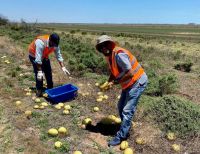11 April 2023
New eye-tracking technologies being developed by Australian engineers to identify building defects early in the construction process could save companies millions of dollars, time, and resources.
The technology, embedded in 3D headsets, is designed to help construction workers undertake more thorough checklists, cutting down on the estimated 60 per cent of building costs related to fixing mistakes.
University of South Australia PhD student Kieran May, computer scientist Dr James Walsh and colleagues from UniSA’s Australian Research Centre for Interactive and Virtual Environments, have designed a tool that combines building information modelling and eye gaze data captured during a standard building inspection.
“The augmented reality headsets shoot laser beams out of the bottom of the user’s eye to track where they are looking in a 3D model when they do a building inspection,” Dr Walsh says.
The eye-tracking technology validates the checklist process, ensuring that construction workers are doing a thorough inspection by matching their eye gaze data against the 3D architectural building model.
“The tool ensures that people doing a building inspection are not just walking through a room, but spending enough time to thoroughly check essential elements, identifying that light switches, taps, cables, or pipes are the correct ones and are properly installed.
“Depending on the nature of the build, whether it’s bespoke or more standardised, the temptation is to tick checklist boxes without doing a rigid inspection, and that can cost thousands of dollars if defects are not picked up early on.”
Dr Walsh says the eye-tracking data does not replace a checklist, but validates it, so defects must still be manually recorded.
“For the construction industry, at the end of the day it’s all about costs and timelines. The earlier we can identify what has gone wrong, the quicker we can fix it and the cheaper it is going to be to remedy it.”
The researchers are working with construction partners to evaluate the tool on site over the life cycle of a building project.
“One of the great things about this project is that it’s an example of how our PhD students and researchers are working on real-world applied problems that can help industry now, not in 10 or 20 years,” Dr Walsh says.
The project was presented at the 2022 IEEE International Symposium on Mixed and Augmented Reality in Singapore.
A video explaining the technology is available at: https://youtu.be/m5jhWzcl_v8
Notes to editors
For a copy of the paper titled “Towards a Quantitative Approach for Monitoring and Evaluating Construction Defect Management Inspection Performance using Eye-Tracking Technologies”, email UniSA media officer [email protected].
The project is led by UniSA PhD students Kieran May and Allison Jing, under the supervision of UniSA researchers Professor Ning Gu, Dr James Walsh, Professor Bruce Thomas, and Associate Professor Ross Smith.
Contact for interview: Dr James Walsh E: [email protected]
Media contact: Candy Gibson M: 0434 605 142 E: [email protected]







